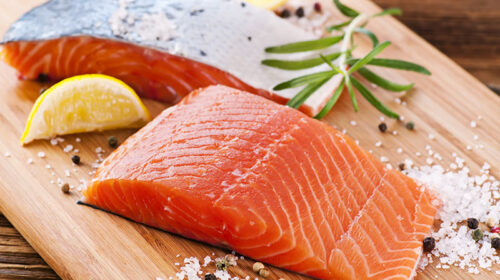2021 global fish protein hydrolysate market analysis & forecast
Market Forecast
The global fish protein hydrolysate market size is projected to be valued at USD 560.5million by 2028 at a CAGR of 4.32% between 2021 and 2028. Fish protein hydrolysate is a blend of degraded proteins extracted by the hydrolysis of protein extracted from fish or fish material. It is a bioactive compound generally obtained through the enzymatic hydrolysis technique, which involves the decomposition of the minced fish together with enzymes. Later the hydrolysis process gives out smaller amino acids and peptides as major products. The hydrolysis done to obtain the fish protein hydrolysate requires various enzymes such as pepsin, trypsin, chymotrypsin, and alcalde. These enzymes are quite expensive, which increases the cost of production. The manufacturing of dried fish protein hydrolysate involves a complex process for removing moisture content, which demands significant energy requirements.
Different wastes—such as roe, head, frame waste, skin, and bone—are generated during fish processing. All of these can be used to produce hydrolysate. On the other hand, the proteins isolated from the waste parts can also be used for the production of hydrolysates. The protein content in different fish waste parts is different. Depending on the properties and chemical composition, fish protein hydrolysate finds application in various industries such as food, pharmaceutical, animal feed, and pet food. Owing to the numerous applications of fish protein hydrolysates in several industries, the market is expected to experience growth for the forecast period.
Moreover, increasing health consciousness among consumers has led to an upsurge in demand for fish protein hydrolysate. Additionally, fish protein hydrolysate is extensively used in animal feed products as they help reduce outbreaks of diseases and boost the metabolic system against infections. Owing to this, the fish protein hydrolysate market is expected to witness a growing curve for the forecast period.
However, the supply of raw material for the production of fish protein hydrolysate is insufficient, such as Atlantic salmon sourced from the Scandinavian countries, such as Norway, Denmark, and Sweden, and Tunaobtainedfrom the Japan Sea and the Pacific Ocean. Additionally, the collection, storage, and processing of the raw material are also difficult as aquatic products are highly perishable. Moreover, along with the difficulties in maintaining raw materials, the management of the final product of fish protein hydrolysate is also challenging. The storage and transportation of fish protein hydrolysate are difficult and expensive. The production of fish protein hydrolysate is not an economical process; this can be a restraining factor for the market.
Market USP
Numerous health benefits provided by fish protein hydrolysate in several industries.
Growth Opportunities in the Market
Nutraceutical applications: The composition of fish protein hydrolysate varies along with the raw material used for the production of fish protein hydrolysates such as head, bone, skin, viscera,type of drying, type of process used, the extent of hydrolysis, and any other pretreatment of raw materials. The chemical composition of food materials plays an important role in human health for supplying essential nutrients and maintaining prosperous health. Fish protein hydrolysates contain high amounts of amino acid, which is very beneficial to human health. Amino acid composition of protein hydrolysates varies with the usage of different raw materials and enzyme sources under different hydrolysis conditions. Fish protein hydrolysate has amino acids in abundance with richness in glutamic and aspartic acid content. Fish protein hydrolysate also contains essential and non-essential amino acids and aromatic amino acids. The numerous nutritional benefits provided by fish protein hydrolysate are peptides specifically marketed as health supplements. Protein hydrolysates have numerous nutraceutical properties such as antiobesity, antioxidant, anti-coagulation, immune modulation, anti-microbial, antihypertension, and anticancer. These numerous health benefits provided by fish protein hydrolysate are expected to create growth opportunities for the market for the forecast period.
Increased quality of animal-derived end products: The awareness regarding the improved quality of animal-derived end products such as milk, eggs, and meat due to fish protein hydrolysates is increasing among consumers.These products help reduce the risk of contracting viral & bacterial infections, boosting the metabolic system and improving digestive feasibility. Manufacturers are increasingly inclining towards adopting natural protein sources in feed for improving the quality of animal-derived products. Moreover, broiler chickens gain numerous benefits by consuming fish protein hydrolysates regularly as it helps in muscle development. Enzymes in fish proteins help in the digestion of fibrous food such as soybean meal and grains, which regulates gut morphology. These numerous benefits provided by fish protein hydrolysate helps in boosting the market growth for the forecast period.
Key Players
-
- Hofseth BioCare ASA (Norway)
-
- Diana Group (Brittany)
-
- Bio-marine Ingredients Ireland (Ireland)
-
- Copalis (France)
-
- Scanbio Marine Group AS (Norway)
-
- Sopropêche (France)
-
- Omega Protein Corporation (US)
-
- Sociedad Pesquera Landes Sa (Chile)
-
- TC Union Agrotech and United Fisheries (Thailand)

